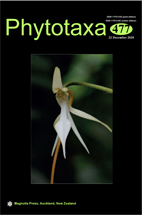Abstract
Páramos are Neotropical high-elevation isolated ecosystems in the Andes. These areas are inhabited by many distinct plant species, such as bryophytes, which provide environmental services including the storage and regulation of surface and groundwater; however, the diversity and biogeographic affinities of bryophytes are still unknown. We used phytogeographic analysis and biogeographic regionalization approaches to determine the biogeographic origins and floristic affinities of this flora in the Tota-Bijagual-Mamapacha (TBM) páramos complex. We found 219 species of bryophytes, 145 mosses, and 75 liverworts. These species are mainly of Neotropical origin, although we also found relationships with Ethiopian, Nearctic, Australian, Antarctic, Palearctic and Oriental regions. According to Morrone (2014), the TBM is located in the South American Transition Zone, the Páramo province, and the Páramos de la cordillera Oriental biogeographic district. The TBM had important floristic relationships with the South Brazilian subregion and the Magdalena province. We found no endemic species to the TBM complex, but identified several endemic species for the Andean páramos.

